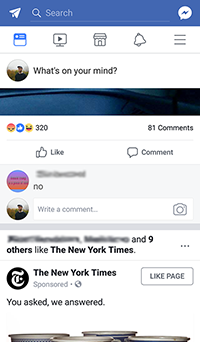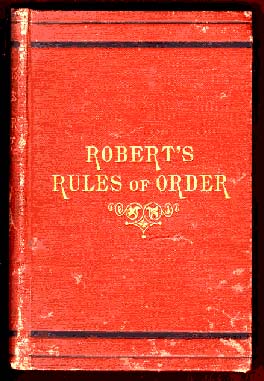1. Who do you want to win?
2. Who do you think will win?
3. How confident are you that this will happen? (Express as a percentage)
4. How intense is your interest in this election? (Express as a percentage)
5. How intense do you think the interest of the typical USF student is in this election? (Express as a percentage)
6. Which of the issues discussed by the candidates this election cycle matters most to you? (No more than three)
7. What are your primary news sources about the election? (No more than three)
Things to discuss:
Horse-race versus issue-based coverage of elections
False equivalence
The role of the press in a democracy
The news silo and bias confirmation
(Don't forget to look at HuffPost and Drudge)
Poll chasing & the wisdom of crowds
"The key skills of introductory journalism courses - research, critical thinking, organizing, and clear expression - are also the key skills that the university tries, but often fails, to teach all students as part of their liberal education. Indeed journalists have refined these skills to a much higher degree than have people in many other disciplines." Betty Medsger, Winds of Change
Friday, November 04, 2016
Tuesday, November 01, 2016
The Schedule for the Rest of the F16 Semester
Week 11 - 10.31
* Continue discussion of crime stories
* Discuss your mini-beat
Week 12 -11.7
* No class Wednesday
* First weekly big story report due 11.9
* Beat memo due 11.11
Week 13 -11.14
* Videolicious week - working multimedia
* Second weekly big story report due 11.16
Week 14 -11.21
* No class Wednesday
* Big story due 11.23
Week 15 -11.28
* First mini-beat story due December 2
Week 16 -12.5
* Second mini-beat story due December 9
Final exam Monday 12/12 10 a.m. - noon
Tuesday, September 27, 2016
Foreward to Book on Robert's Rules of Order for Elementary School Children
| 1876 cover of Robert's Rules of Order , a book containing rules of order intended to be adopted for use by a deliberative assembly. (Photo credit: Wikipedia) |
To have an effective society, we need effective organizations. To have equality for all, we need to hear everyone's voice, and not just those who scream the loudest, or have the most money, or control the information flow. No one should be allowed to speak over others, hog the floor, or not allow all sides to be heard. Democracy is for everyone, including children.
Children should be taught the fundamental rules of order in the democratic process. This guide is designed specifically to teach children from Kindergarten through 5th Grade how to conduct orderly meetings where everyone gets a chance to speak.
Labels:
meeting coverage,
Robert's Rules of Order
Wednesday, September 07, 2016
Interviewing Ethics and Interviewing Technique
Watch this interview from around 2:30 to around 5:30. In the comments section, tell me what you think of the interviewer's approach. Those who comment later can comment on earlier comments!
Saturday, April 23, 2016
Why Knowing AP Style is Ever More Useful
Copy editors being fired at local news group, which means:
This is going to place a new level of responsibility on reporters and, especially, assigning editors. Many of the ways in which the desk bails us out — often without us noticing — will disappear.
This is going to place a new level of responsibility on reporters and, especially, assigning editors. Many of the ways in which the desk bails us out — often without us noticing — will disappear.
Labels:
copy editing,
future of journalism
Thursday, February 25, 2016
Checklist for on-campus interview
| The Interview (Photo credit: Wikipedia) |
* education
* year came to USF
* why came to USF
* best, worst things about USF
* family
* age
* familiarity with ASUSF resolution on micro-aggressions
* thoughts on micro-aggressions generally and on resolution specifically
* salary
* how contact if need confirm anything
* anything we haven't covered you'd like to bring up
Labels:
micro aggression,
profile writing
Thursday, February 11, 2016
News Conference Background 2.11.16
You are a Foghorn reporter. Your editor summons you to this press conference, telling you that all morning she has been hearing vague but disturbing rumors about a closed meeting last night of the USF
Executive Council - which consists of all the top University administrators - at which administrator Dr. Russ
Winters gave a presentation. Winters has agreed to come to an
informal news conference for campus media to clarify what was said. The Foghorn editor whispers to you that she got him
to agree to come by implying implied she knows exactly what went on at the
meeting, though she doesn’t, only that it upset some faculty and administration a great deal. She wants this story up online no later than 4 p.m. today so she expects you to have it done by 3:45 p.m.
Basic fact sheet from the university: Winters was appointed University Director of Institutional Advancement two months ago. He has a B.A.
from the University of Scranton and an M.A. and a Ph.D., both in Public
Relations, from the University of Georgia. He is 36. For the last ten years he
has been Director of Media Relations for John Deere Tractor Company in
Belleville, Illinois.
Some Not-So-Terrible Fire Leads
| Late Night with David Letterman (Photo credit: Wikipedia) |
The Terrible Fire
1) In a late-night rescue,
Castro Valley fireman Norman Young dragged a local resident from his burning
home earlier today, reviving him with mouth-to-mouth resuscitation.
According to authorities, the
rescued man, Albert Lofton, 53, and his wife, Barbara Lofton, 26, who suffered
a sprained ankle jumping from an upstairs window, were treated at a local
hospital and are in satisfactory condition.
The fire was the apparently
caused by Lofton falling asleep on his living room sofa while smoking a
cigarette. According to authorities, Lofton said he had started a fire in the
home in the same way two years ago. 99 words
(could go chronological at this point)
The Lofton’s house, which is
located at 1413 Napa St. in Castro Valley, suffered $150,000 in damages, fire
officials said.
(or you could add the damage
information and go chronological)
2) (Maybe this works.
Certainly exciting and consistent with the facts)
After the wife of a Castro
Valley man was driven back by flames and chose to save herself by jumping from
a second-story window of their burning home, suffering a sprained ankle, late
last night a local fireman entered the house and rescued the unconscious
husband she had failed to reach.
According to authorities,
fireman Norman Young revived Albert Lofton, 53, using mouth-to-mouth resuscitation
after dragging Lofton from his living room. Lofton later told authorities he
had apparently set his sofa on fire when he fell asleep while watching David
Letterman, cigarette in hand.
Lofton and wife Barbara, 26,
were taken to Kaiser Hospital in Leandro. Mrs. Lofton has been released. Mr.
Lofton is in satisfactory condition but remains hospitalized, hospital
officials said. 123 words
3) Albert Lofton, 56,
certainly isn't the first person to fall asleep while watching the "Late
Show with David Letterman.” He is,
however, the second Castro Valley resident in the last two years to set his
house aflame after dozing off on the sofa with a lit cigarette in his hand,
according to authorities.
The first perpetrator: also
Albert Lofton.
Around 24 months ago,
Lofton fell asleep while smoking a cigarette, which caused $15,000
in damages to his home.
Last night Lofton kindled
yet another fire in just the same way, said the Castro Valley Fire Department,
one of whose firefighters dragged Lofton unconscious from his burning home and
revived him with mouth-to-mouth resuscitation. 113 words
This time damages were
$150,000, authorities said.
Tuesday, February 09, 2016
Out of Class Exercise for Thursday, Feburary 11, 2016
* Find a Super Bowl story whose lead you like that can be linked to online
* Tweet a link to that story using #usfreports
* If you need to, employ the Google url shortener
* Tweet a link to that story using #usfreports
* If you need to, employ the Google url shortener
Wednesday, January 27, 2016
Facebook Instant Articles and Hyperlocal News
 |
| Illustration of Facebook mobile interface (Photo credit: Wikipedia) |
Labels:
Facebook,
future of journalism,
hyperlocal
Monday, January 25, 2016
I'd Call This a Nice Job of Reporting
From FiveThirtyEight
Last Friday, Washington, D.C.’s blizzard began sometime after the anti-abortion March for Life began, but before protesters reached the Supreme Court. The snow couldn’t stop a Franciscan friar, though. He kept on walking, barefoot, down the streets, singing hymns with other marchers. A long column of students, all in yellow, chanted a few choruses of “Pro-choice, that’s a lie! Babies never choose to die!” and then started up a call-and-response rosary with a bullhorn.
Not far away, I was cracking ice off of the tips of my touch-screen gloves and surveying protesters, trying to learn who had come to the march and what kind of post-post-Roe v. Wade world they wanted to build. I approached every fifth marcher I saw and interviewed 60 people over the four-hour event.1 It’s not a sample I’d publish in an academic journal or anything, but it let me learn more about the movement than I could from staid news reports of how many people showed up.
Subscribe to:
Posts (Atom)








